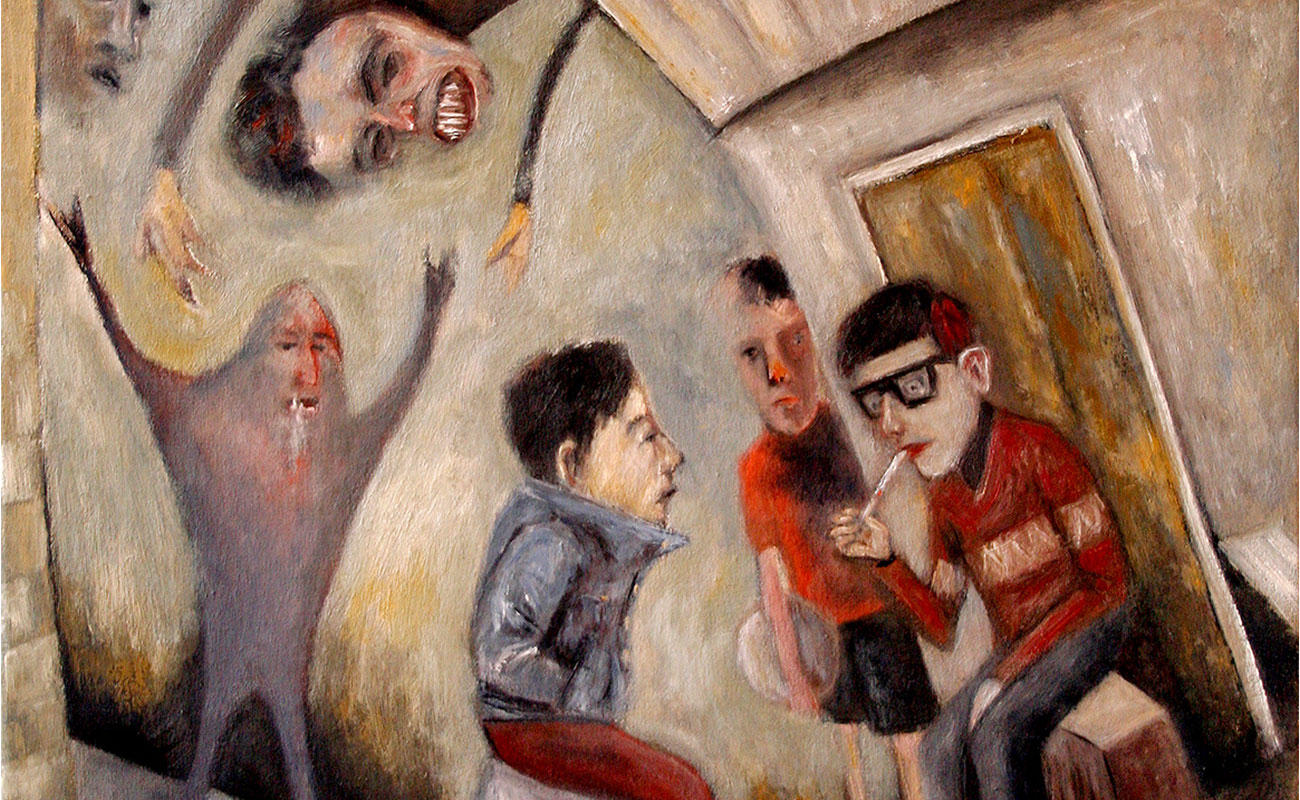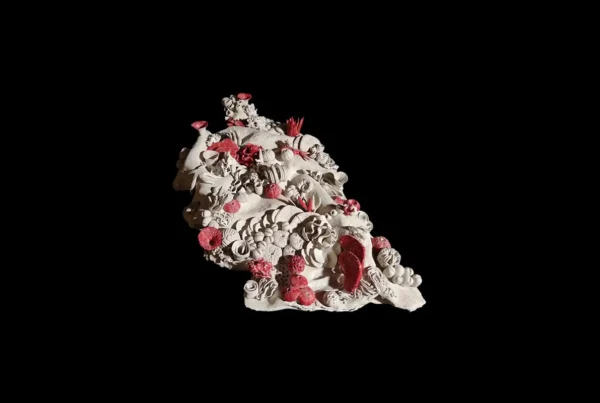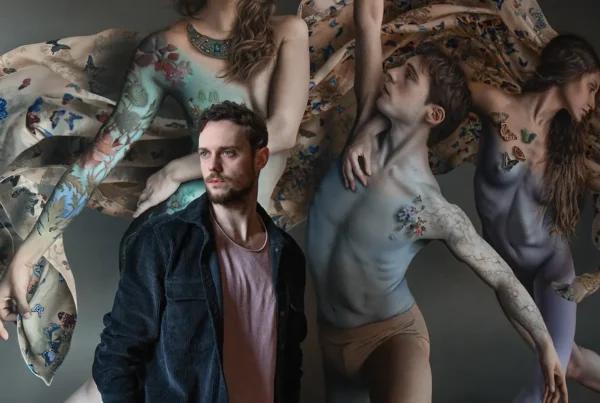“Think hard if you really want to be an artist. Try to find out what that means.”
From Comics to Painting – A Journey of Creativity
Lupo Sol, a painter hailing from northern Spain, currently resides and works in Alicante. For roughly seven years, Sol has been immersed in the realms of painting and drawing, drawing inspiration from expressionist painting and surrealism. As an independent artisan, he works solo, unaffiliated with any particular group, movement, gallery, or agent.
Sol regards a significant portion of his artwork as traditional, though he acknowledges that this perception may not be shared by most viewers. Embodying the words of a Spanish philosopher—”it’s me and my circumstances”—Sol’s paintings reflect his personal memories and perspective on life. His work frequently features ordinary scenes populated by eccentric and peculiar characters.
The artist seeks to revisit memories from his childhood and youth, infusing them with a touch of sarcasm and individuality. Primarily, Sol’s work depicts unusual characters within urban and park settings, capturing everyday moments occasionally tinged with surrealism. His focus lies in portraying the expressions of these peculiar faces, an endeavor that could be described in artistic terms as an exploration into “the psychology of the human being.”
Additionally, Sol harbors a keen interest in social criticism. However, he candidly admits that he struggles to convey this theme effectively in his work. To sell his creations, Sol relies on the internet and various social networks, embracing the role of an independent artist.
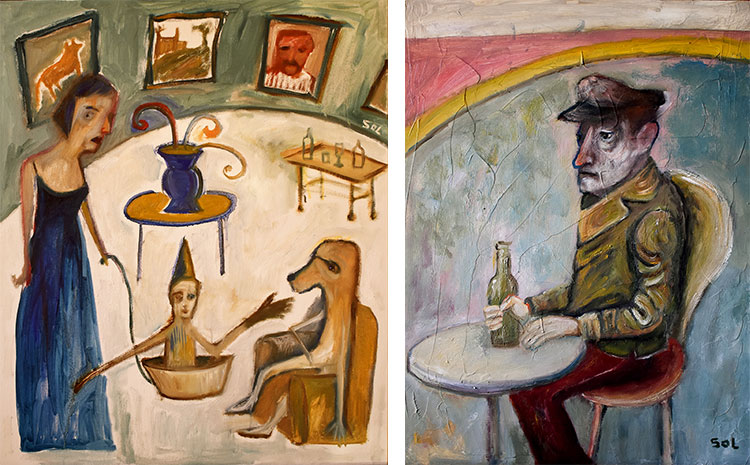
Lupo Sol: Creative Process, Embracing Spontaneity and Experimentation
During his childhood, Lupo Sol was captivated by the world of comics and illustrations, envisioning a future connected to these creative pursuits. Despite his early artistic interests, his life’s journey led him to explore various other passions and hobbies, such as music, writing, and graphic design. Throughout these experiences, the artist maintained an unwavering commitment to creativity and self-expression, even though he did not pursue formal education in the arts.
It was only during a period of professional uncertainty that Lupo Sol rediscovered his love for drawing and painting. This unexpected opportunity arose primarily due to financial necessity. Encouraged by his wife, who gifted him a box of painting supplies, Sol embarked on his artistic career almost serendipitously.
Lupo Sol’s story may lack romanticism or metaphysical undertones, but it is a testament to his determination and persistence. The artist immersed himself in painting without hesitation, fear, or extensive prior knowledge, driven by an innate passion for the craft.
In reflecting on his artistic creations, Lupo Sol possesses a humble and grounded perspective. He understands that not every piece will be a masterpiece and does not hold an overly sentimental attachment to his work. This approach allows the artist to continuously evolve and grow in his practice.
When considering the works of other artists, Sol acknowledges numerous pieces that have left a significant impact on him. He cites influences ranging from Marc Chagall’s “Paris from a Window” and Ernst Ludwig Kirchner’s street scenes to some of Francisco Goya’s dark and evocative paintings. Chagall, in particular, holds a special place in Sol’s artistic development as one of his earliest inspirations. Although Salvador Dalí was initially influential for Lupo Sol, his appreciation for the artist has since waned. Nevertheless, Sol’s artistic journey has been shaped by countless other talents, too numerous to mention individually.
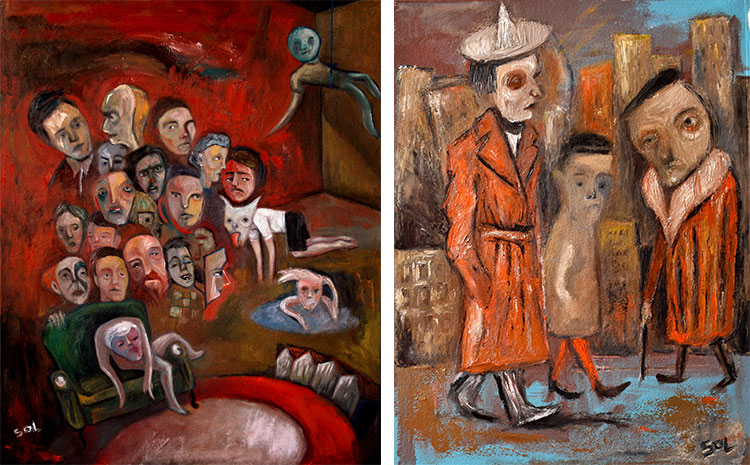
Lupo Sol Advice to Emerging Artists: Navigating the World of Art
Lupo Sol’s creative process often begins with a rough sketch on paper, which he then transfers onto canvas. He tends to eschew traditional, methodical approaches taught in art schools, finding them dull and tedious. Instead, Sol’s artistic method is characterized by spontaneity and experimentation.
The artist frequently paints characters directly onto the canvas without premeditation, allowing their roles and integration into the final piece to emerge organically. This approach, while laden with uncertainty and risk, has the potential to yield satisfying results quickly or to prolong the creative process. Sol acknowledges that there are always options and resources available to him as an artist. Recently, he has shifted towards starting with a more defined idea, which, while it may slow down his productivity, can lead to more cohesive and well-planned artworks.
In terms of an ideal work environment, Sol currently aspires to have a dedicated studio or workshop that would provide ample space and freedom. Presently, he works in the living room of his residence, which can sometimes feel restrictive due to spatial limitations. The artist resides in a tranquil town, providing a conducive atmosphere for creativity. Interestingly, despite his peaceful surroundings, Sol’s work remains uninfluenced by nature or landscape, reflecting his distinct artistic vision.
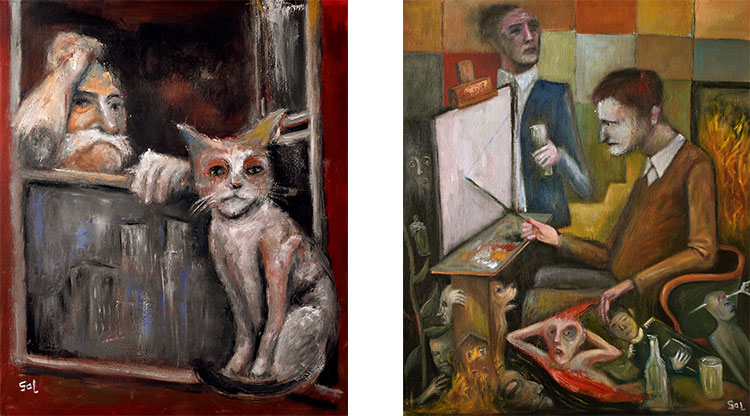
Lupo Sol’s Aspirations: From Retrospective Exhibitions to Future Collaborations
For emerging artists embarking on their creative journeys, Lupo Sol advises them to carefully consider their commitment to the artistic path. They should strive to understand the meaning of being an artist, while setting aside preconceived notions of famous figures like Picasso. If, after the age of 20, they still possess a burning desire to pursue painting, they must evaluate their willingness to work tirelessly without the guarantee of financial rewards or societal approval. Developing unwavering determination is crucial to persevering in the face of challenges and societal pressures.
Financial security plays a significant role in shaping an artist’s journey. If one hails from an affluent background, where financial support is readily available, this allows for an immediate immersion into the world of art, regardless of innate talent. The absence of financial concerns enables them to focus solely on their creative pursuits, affording them a considerable advantage over their less fortunate peers.
Lupo Sol acknowledges the reality of social class distinctions, even in a postmodern era replete with distractions and superficialities. To succeed, artists must prioritize their craft and resist the allure of digital distractions. Diligent work and a reduction in screen time are paramount.
Furthermore, Lupo Sol emphasizes the importance of embracing the marketing aspect of the artistic profession. Though it may be distasteful, it is a necessary component of achieving success. An artist must be prepared to promote and sell their work, even if it feels unpleasant.
Regarding his own aspirations, Sol dreams of acquiring a larger residence and a dedicated studio space for his creative endeavors. Before realizing this dream, he wishes to organize a retrospective exhibition in his hometown. Although he is not well-known there, he harbors a peculiar affinity for the idea of showcasing his work in the place of his origin. Beyond that, he looks forward to participating in future exhibitions, as it is an experience that has been relatively unfamiliar to him thus far.



